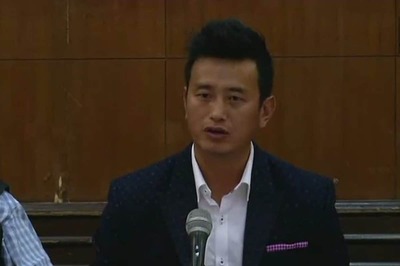
views
Prime Minister Narendra Modi would be visiting Samarkand, Uzbekistan, on September 15-16, 2022 to participate in the Shanghai Cooperation Organisation (SCO) summit. India inter alia will assume the SCO presidency and host the first such summit in 2023. According to the Ministry of External Affairs (MEA) press release, PM Modi will also hold a few bilateral meetings on the sidelines of the summit, will review SCO activities since its inception in 2001, examine the prospects of future cooperation, and discuss topical issues of regional and global importance.
As the name itself suggests, SCO is a China-centric eight-nation grouping aimed at fighting “three evils” — extremism, secessionism and terrorism; and to bolster security, economic and political cooperation, among member-states. It comprises China, Russia, Kazakhstan, Kyrgyzstan, Tajikistan, Uzbekistan, India and Pakistan (the latter two were admitted in 2017). Iran will be joining the ranks this year, marking a first for the “revolutionary regime” in Tehran which is not a member of any multilateral grouping.
Conceived in 1996 and known originally as ‘Shanghai Five’ — China, Kazakhstan, Kyrgyzstan, Russia and Tajikistan — it went about deepening economic and security linkages. Over the years Chinese economic footprint has grown conspicuously in Central Asia (CA), earning it considerable political clout in the bargain, much to the chagrin of Russia which regards the region as its backyard. It has helped the economic development of the member-states but also saddled them with debts, generating some discomfiture.
Given its historical linkages with and interest in CA, India was quick to establish a diplomatic presence in all the newly independent former Soviet republics. Former Prime Minister PV Narasimha Rao had paid high-profile visits to the region in 1993 and 1995. This author was associated with Narasimha Rao’s visit to Kazakhstan in 1993. Yet, we could not sustain the momentum. Nonetheless these nations are well disposed towards India and had batted, along with Russia, for India’s membership of SCO.
“China is not just challenging the existing world order. Slowly, messily and, apparently with no clear end in view, it is building a new one”, the Economist had presciently noted in September 2014. India apart, SCO members are authoritarian or semi-liberal states with close ties with China, opposed to Western liberal democratic values. In fact, the American request for an observer status in SCO was promptly turned down.
Diminished in stature and forced to play second fiddle, Russia can offer even fewer checks on Chinese ambitions and dominance of SCO. What then is India, the world’s largest democracy and a key Quad member, doing in such a grouping? Is it not the odd one out, even more so, with an increasingly belligerent China and an embryonic “Red Quad” comprising China, Russia, Pakistan and Iran?
Meanwhile, an unexpected announcement on September 8 of the ongoing disengagement of Indian and Chinese troops in the Gogra-Hotsprings (PP-15) area of eastern Ladakh, virtually on the eve of the SCO summit, has prompted observers to dust off their crystal balls! Does it signal the possibility of a meeting between PM Modi and President Xi, at Samarkand? Overnight, popular interest in the Summit has sharpened.
President Vladimir Putin and Xi Jinping are slated to meet on the margins of the summit. Going by the past practice, a tete a tete between Modi and Putin is a given. The Indian PM is unlikely to meet his Pakistani counterpart. But what about Xi?
Modi and Xi last met on November 13, 2019 in Brazil during the BRICS summit within five weeks of the latter’s visit to India for the 2nd informal summit at Mahabalipuram. They have not met face to face since, due to the Covid pandemic and Chinese misadventure in eastern Ladakh in May 2020.
India has taken a firm and unequivocal stand that the status quo ante must be restored to normalise the relationship. Sixteen rounds of intensive talks at the corps commanders’ level have made limited progress. It now transpires that an understanding on PP15 was reached at the last round on July 17. Why did China wait another three weeks to implement the agreement? The conclusion is obvious. Our Chinese friends have made a tactical move to test the waters.
A kind of pattern can be discerned here. Under President Xi’s watch, armed standoffs have taken place at Depsang in 2013, Chumar in 2014 and Doklam in 2017, leading up to or during the visits of PM Manmohan Singh to China, President Xi to India and PM Modi to China respectively. These incidents were sorted out with relative ease, as compared to the ongoing crisis.
The reality is that China is still in adverse occupation of Indian territory at multiple friction points along the LAC. Some 50,000 to 60,000 PLA troops are still amassed along the LAC and can be mobilised at very short notice. Since May 2020 there has been disengagement in four sectors but no de-escalation. China has been building permanent infrastructure at a furious pace and is in no hurry to withdraw.
To complicate matters China enacted a “Land Border Law” (effective 1 January 2022), making it incumbent upon the PLA to safeguard Chinese sovereignty and territorial integrity that are “sacred and inviolable”. Though not India-specific, it does give China a handle to play hardball if it so chooses.
Furthermore, personal engagement with ‘Emperor Xi’ who has assumed the mantle of a leader determined to wipe-out a ‘century of humiliation’ is unlikely to cut much ice as has become evident from the two informal summits. Finally, in the run up to the 20th CPC Congress, which is likely to bestow on him an unprecedented third term, he is more likely to play to the galleries.
Yet not everything is hunky dory for Xi. Chinese internal and external challenges have multiplied in the last two years. The economy has slowed down, national debts have mounted, the property market has crashed, a flight of capital and talent is in evidence, business tycoons are being persecuted and inhumane lockdowns of entire cities to check the spread of Covid pandemic has sent shivers down collective spines at home and abroad.
Looking outwards, the much-touted BRI in which at least $200 billion has been invested is backfiring. Just in South Asia, Pakistan, Sri Lanka, Bangladesh, and Maldives are facing financial difficulties of varying degrees. Beneficiaries are defaulting on loan repayments everywhere. The world over anti-China sentiment has never been higher. Quad is striking deeper roots and meeting regularly at the leaders’ level. AUKUS has been concluded. Japanese defence outlay is growing. Tensions have flared up in the Taiwan Straits. Doors are getting shut internationally on Chinese SOEs like Huawei. The US is steadily tightening a hi-tech denial regimen for China. In short, China is paying for Xi Jinping’s cardinal mistake of riding roughshod over everybody at home and abroad.
As such, the optics of PM Modi striding up to meet Xi will play out well for him, but perhaps not the former. A meeting at this stage would only be about restoring status quo ante at the LAC to pre-May 2020 positions. This needs to be negotiated in advance by specialists of which there is no indication. However, if such an understanding has indeed been hammered out or the Chinese side seeks one, a business-like meeting is in order. Else exchange of courtesies should suffice.
Now back to SCO which has never been more relevant to India. Not just that. India and China are founder members of tight groupings like BRICS, RIC and G20. Our relations have gone south once again but cannot always remain so. The reality of geography dictates that we must find a modus vivendi regardless of the baggage that both sides carry. “We have considerable experience of misunderstanding each other,” cautions former NSA Shivashankar Menon, a well-respected China expert.
To that end, we need continuous and sustained engagement at various levels. We are better-off finding solutions on the negotiating table for the alternative is conflict, which nobody wants or can afford. Yet, talks can be meaningful only at an opportune time and place, on the basis of give and take, not coercion.
That is one reason why forums like SCO come handy. However, by itself India has plenty of role to play at SCO with its impressive credentials in counter-terrorism, human resource development, education, IT, telemedicine and capacity building, to name a few. We can safeguard and promote our national interests more effectively from within than outside. Our presence automatically tempers the potential of mischief by our adversaries and gives comfort to our friends, as we instinctively bring value to an organisation rather than becoming its bete noire.
In sum, while China flaunts its wallet and Russia its guns to SCO, India bestows it with respectability and transparency.
The author is Former Envoy to South Korea and Canada and Official Spokesperson to the Ministry of External Affairs. The views expressed in this article are those of the author and do not represent the stand of this publication.
Read all the Latest Opinion News and Breaking News here




















Comments
0 comment